calsfoundation@cals.org
Crustaceans
Crustaceans (subphylum Crustacea) are a very large and diverse group of arthropods (invertebrate animals having an exoskeleton, jointed appendages, and segmented bodies). Crustaceans are distinguished by having paired mandibular jaws and maxillae, along with two pairs of antennae. Recent classifications include six classes within crustaceans—Branchiopoda, Remipedia, Cephalocarida, Maxillopoda, Ostracoda, and Malacostraca.
The Classes of Crustacea
Class Branchiopoda includes several groups of primitive aquatic and marine animals, including clam shrimp, the small fairy shrimp (less than one centimeter in length and living in temporary pools), and the “living fossil” tadpole shrimp. The most noteworthy brachiopods are the cladocerans, or water fleas, that make up many of the zooplankton in Arkansas lakes and ponds. These small, free-swimming animals are a critical food source for most small fish.
Class Remipedia, a small group of blind crustaceans found in the saline waters of coastal groundwater aquifers, and class Cephalocarida, tiny marine detritus-feeders, consist of animals not found in Arkansas.
Class Maxillopoda is a very diverse group of crustaceans, including such varied organisms as barnacles and the parasitic fish lice. The most diverse subset of this group is the copepods, many of which are important members of the zooplankton fauna of lakes and ponds, and some of which are parasitic on fish. Both planktonic and parasitic copepods are found in Arkansas.
Class Ostracoda is a large group of superficially clam-like crustaceans sometimes known as seed shrimp. Some species are part of the zooplankton in freshwaters and oceans, but most live on the sea floor and some are even found in humid tropical forest soils. Ostracods are found in nearly every aquatic habitat, and recent work has even collected ones that are commensals on Arkansas’s cave crayfishes (meaning that one animal benefits while the other is unharmed by the symbiotic relationship).
Class Malacostraca is the largest group of crustaceans, including such well-known examples as crabs, shrimp, and lobsters. Malacostracans are abundant in the oceans of the world and also exist in freshwater and on land. They share a common body plan composed of a head, an eight-segmented thorax, and an abdomen of usually six segments. Within this group, Arkansas is home to noteworthy species of peracarids (amphipods, isopods) and decapods (shrimp, crayfish).
Arkansas Malacostraca
In peracarids (superorder Peracarida), the basal segments of the legs have flattened plates that enclose a pouch where the young develop; this is called the marsupium. Isopods (order Isopoda), so named because all of their legs are the same, are exemplified by the pill bugs or “roly polies” often found under rocks and logs in Arkansas forests. Amphipods (order Amphipoda, literally “different-footed”) include the scuds or side-swimmers that are an important prey item in Arkansas trout streams. Arkansas is also home to a number of white, eyeless, cave-obligate isopods and amphipods that are considered “Species of Greatest Conservation Need” in the Arkansas Game and Fish Commission’s Arkansas Wildlife Action Plan.
In contrast to the peracarids are the eucarids (superorder Eucarida), characterized by having stalked eyes and a carapace fused to all thoracic segments. All Arkansas eucarids are in the order Decapoda, which literally are “ten-footed.” Decapods are represented in the state by shrimps and crayfishes.
Arkansas is home to two native shrimp species. The Mississippi Grass Shrimp (Palaemonetes kadiakensis) is a common inhabitant of wetlands in the southern and eastern half of the state. The Ohio Shrimp (Macrobrachium ohione) is a less commonly encountered denizen of the state’s largest rivers.
The most impressive of the crustaceans are the members of the infraorder Astacidea, with their enlarged first pair of claws, or chelae. The clawed lobsters (family Nephropidae), a well-known symbol of fine dining, are marine and have pelagic larvae (which have the potential to disperse long distances). In contrast, the visually similar crayfish occupy freshwaters and provide parental care for their eggs and young, which are carried on the underside of the female’s tail.
Crayfishes
Worldwide, crayfishes fall into three families and reach their greatest diversity in the southeastern United States, where all species are in the family Cambaridae. Arkansas has nearly sixty different crayfish species, more than any other state west of the Mississippi River, and eight species are endemic to the state. Two Arkansas crayfish species are designated as endangered under the federal Endangered Species Act. The Arkansas Wildlife Action Plan lists twenty-four crayfishes as “Species of Greatest Conservation Need,” with crayfish as a group having the highest average priority score of any group covered by the plan.
The genus Bouchardina is monotypic—meaning that it includes only one species—and endemic to Arkansas. Bouchardina robisoni, the Bayou Bodcau Crayfish, grows to a maximum size of less than two inches and inhabits seasonally flooded backwaters of Bayou Bodcau in south-central Arkansas. This species is an example of a secondary burrower, a crayfish that lives much of the year in burrows but is found in surface waters for part of the year.
Three members of the genus Cambarus are endemic to Arkansas. Cambarus aculabrum, the Benton County Cave Crayfish, and Cambarus zophonastes, the Hell Creek Cave Crayfish, are white, eyeless crayfish found only in caves and designated as endangered species under the federal Endangered Species Act. The third species, Cambarus causeyi, the Boston Mountains Crayfish, is a primary burrower found around highland springs in the Boston Mountains ecoregion.
The genus Fallicambarus reaches its peak diversity in Arkansas with six endemic species and nine total species found in the state. Members of this genus are examples of primary burrowers—they spend the majority of their life in burrows, often in lawns and roadside ditches. They venture onto the surface only during warm, moist nights in order to find supplemental food items or mates. The six endemic species are: Fallicambarus caesius (Timberlands Burrowing Crayfish), Fallicambarus gilpini (Jefferson County Crayfish), Fallicambarus harpi (Ouachita Burrowing Crayfish), Fallicambarus jeannae (Daisy Burrowing Crayfish), Fallicambarus petilicarpus (Slenderwrist Burrowing Crayfish), and Fallicambarus strawni (Saline Burrowing Crayfish).
The genus Orconectes includes two of Arkansas’s endemic species: Orconectes acares, the Redspotted Stream Crayfish, and Orconectes leptogonopodus, the Little River Creek Crayfish. Both are found in the Ouachita Mountains region of Oklahoma and Arkansas and are examples of tertiary burrowers—species that live in rocky stream bottoms and rarely if ever burrow.
The genus Procambarus includes three Arkansas endemics, all of which are primary burrowers: Procambarus parasimulans (Bismark Burrowing Crayfish), Procambarus regalis (Regal Burrowing Crayfish), and Procambarus reimeri (Irons Fork Burrowing Crayfish).
Crayfish are of importance to Arkansans in several ways and are commonly referred to as “crawfish” or “crawdads.” In many circles, crayfish are a popular food item and are commercially raised for this purpose. While the major crayfish farming operations are primarily in Louisiana, Arkansas does have some smaller operations as secondary crops for farmers of rice or fish. Commercially raised crayfish are almost exclusively either White River Crawfish (Procambarus acutus) or Red Swamp Crawfish (Procambarus clarkii). Crayfish are also commonly used as fishing bait, since they are prominent in the diet of many of our popular sportfish.
People are often aware of primary burrowing crayfish by the mud chimneys they build. When crayfish build chimneys in someone’s lawn, they came into conflict with people because the chimneys are considered to be unsightly and are startling to hit with a mower. However, these crayfish are causing little real harm, their chimney-building will end during dry seasons, and their tunneling activity mixes and aerates the soil, making it more productive.
Efforts continue to improve the understanding of Arkansas crayfish, but there is much to be learned regarding the taxonomy, distribution, life history, and conservation status of many of the crayfish species in the state.
| Arkansas Crayfish Species of Greatest Conservation Need, Arranged by Priority Score (dated 2015, updated 2017): | |
| Cambarus aculabrum Benton County Cave crayfish | 80 |
| Cambarus zophonastes Hell Creek Cave crayfish | 80 |
| Fallicambarus petilicarpus slenderwrist burrowing crayfish | 80 |
| Procambarus reimeri Irons Fork burrowing crayfish | 80 |
| Fallicambarus strawni Saline burrowing crayfish | 65 |
| Cambarus causeyi Boston Mountains crayfish | 62 |
| Bouchardina robisoni Bayou Bodcau crayfish | 50 |
| Fallicambarus gilpini Jefferson County crayfish | 50 |
| Orconectes eupunctus coldwater crayfish | 50 |
| Fallicambarus harpi Ouachita burrowing crayfish | 46 |
| Fallicambarus jeanae daisy burrowing crayfish | 46 |
| Faxonella blairi Blair’s fencing crayfish | 46 |
| Orconectes marchandi Mammoth Spring crayfish | 46 |
| Procambarus regalis regal burrowing crayfish | 38 |
| Cambarus setosus Bristly Cave crayfish | 34 |
| Orconectes williamsi Williams’ crayfish | 34 |
| Fallicambarus dissitus Pine Hills digger | 32 |
| Procambarus tenuis Ouachita Mountain crayfish | 31 |
| Orconectes meeki brevis Meeke’s short pointed crayfish | 30 |
| Cambarus hubbsi Hubbs’ crayfish | 27 |
| Orconectes menae Mena crayfish | 27 |
| Orconectes nana midget crayfish | 27 |
| Orconectes macrus Neosho midget crayfish | 23 |
| Orconectes neglectus chaenodactylus gapped ringed crayfish | 20 |
| Orconectes acares redspotted stream crayfish | 19 |
| Orconectes leptogonopodus Little River Creek crayfish | 19 |
| Procambarus parasimulans Bismark burrowing crayfish | 19 |
For additional information:
Johnson, S. K., and N. K. Johnson. Texas Crawdads. College Station, TX: Crawdad Club Designs, 2008.
Martin, J. W., and G. E. Davis. An Updated Checklist of the Recent Crustacean. Science Series No. 39. Los Angeles: Natural History Museum of Los Angeles County, 2001.
Pflieger, W. L. The Crayfishes of Missouri. Jefferson City: Missouri Department of Conservation, 1996.
Thorpe, J. H., and A. P. Covich. Ecology and Classification of North American Freshwater Invertebrates. San Diego, CA: Academic Press, 1991.
Wagner, B. and D. Magoulick. Arkansas Wildlife Action Plan.
Little Rock, AR: Arkansas Game and Fish Commission, 2015. Online at: http://www.wildlifearkansas.com/materials/2017/06%20Crayfish.pdf
(accessed February 2, 2022).
Walls, J. G. Crawfishes of Louisiana. Baton Rouge: Louisiana State University Press, 2009.
Brian K. Wagner
Arkansas Game and Fish Commission
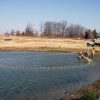 Baitfish Industry
Baitfish Industry Dermott Crawfish Festival
Dermott Crawfish Festival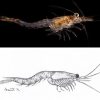 Mysid Shrimps
Mysid Shrimps Science and Technology
Science and Technology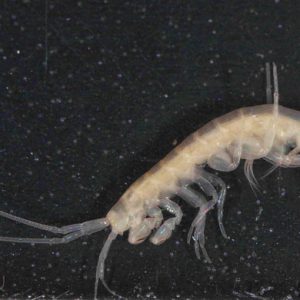 Amphipod
Amphipod 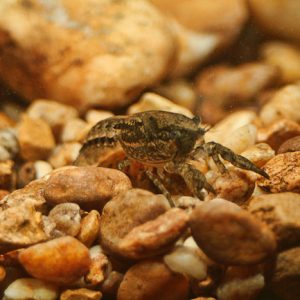 Bayou Bodcau Crayfish
Bayou Bodcau Crayfish  Benton County Cave Crayfish
Benton County Cave Crayfish  Boston Mountains Crayfish
Boston Mountains Crayfish 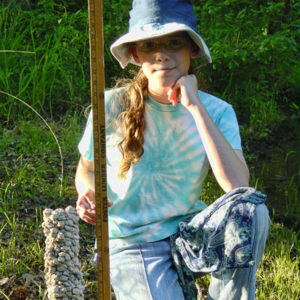 Crayfish Chimney
Crayfish Chimney 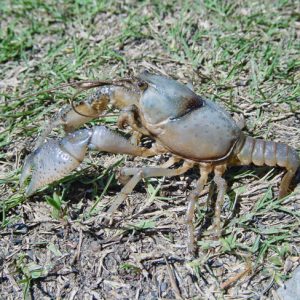 Daisy Burrowing Crayfish
Daisy Burrowing Crayfish 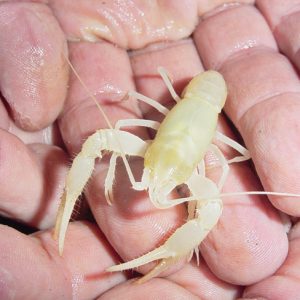 Hell Creek Cave Crayfish
Hell Creek Cave Crayfish 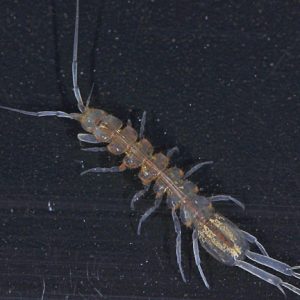 Isopod
Isopod 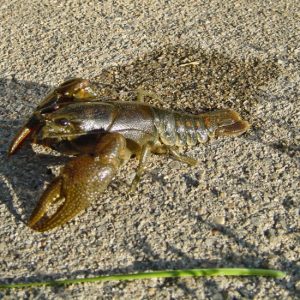 Redspotted Stream Crayfish
Redspotted Stream Crayfish 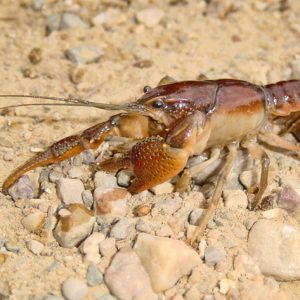 Regal Burrowing Crayfish
Regal Burrowing Crayfish 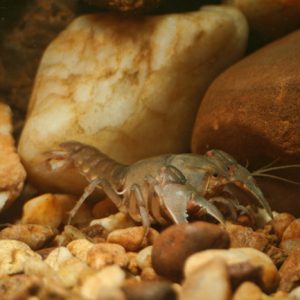 Timberlands Burrowing Crayfish
Timberlands Burrowing Crayfish 




Comments
No comments on this entry yet.